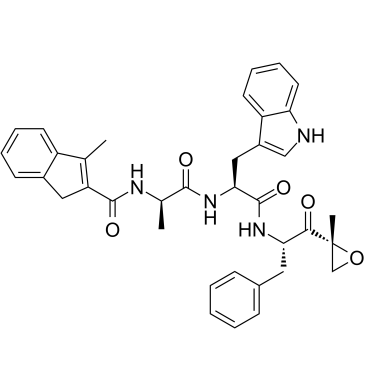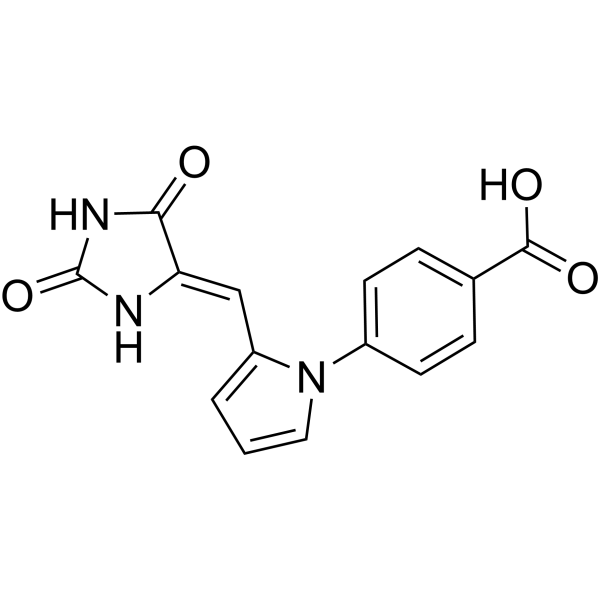Enzymes(酶)
Enzymes are very efficient and specific catalyst proteins which react with 1 or few types of substrates in biochemical reactions and are responsible for bringing about almost all of the chemical reactions in living organisms. Enzymes speed up reactions by providing an alternative reaction pathway of lower activation energy. Without enzymes, reactions take place at a rate far too slow for the pace of metabolism which means that they speed up the chemical reactions in living things.
There are 2 types of enzymes, ones that help join specific molecules together to form new molecules & others that help break specific molecules apart into separate molecules. Enzymes play many important roles ouside the cell as well. One of the best examples of this is the digestive system. For instance, it is enzymes in your digestive system that break food down in your digestive system break food down into small molecules that can be absorbed by the body. Some enzymes in your digestive system break down starch, some proteins and others break down fats. The enzymes used to digest our food are extra-cellular since they are located outside our cells & enzymes inside our cells are intra-cellular enzymes. Enzymes are used in ALL chemical reactions in living things; this includes respiration, photosynthesis, movement growth, getting rid of toxic chemicals in the liver and so on. Enzymes are proteins that must have the correct structure to be active. They are very easily affected by heat, pH and heavy metal ions.
Ribonucleoprotein enzyme catalytic activity is located in the protein part but for some the catalytic activity is in the RNA part. A catalyst is any substance which makes a chemical reaction go faster, without itself being changed. A catalyst can be used over and over again in a chemical reaction and does not get used up.
Enzymes lower the amount of activation energy needed by binding to the reactants of the reaction they catalyze, thus speed up the reaction and can process millions of molecules per second. Enzymes are typically large proteins with high molecular weight that permit reactions to go at conditions that the body can tolerate.
Enzyme nomenclature is based on what the enzyme reacts with & how it reacts along with the ending ase.
Enzymes must get over the activation energy hurdle.
Enzymes change how a reaction will proceed which reduces the activation energy and makes it faster. The more we increase the enzyme concentration the faster the reaction rate for non-catalyzed reactions. Enzymes that are catalyzed reactions also increase reaction rate at higher level of concentration but up to a certain point called Vmax which means that the enzyme has reached its maximum point. The reaction is limited by both the concentrations of the enzyme and substrate. Enzymes as catalysts take part in reactions which provide an alternative reaction pathway. Enzymes do not undergo permanent changes and remain unchanged at the end of the reaction. They only change the rate of reaction, not the position of the equilibrium.Enzymes as catalysts are highly selective by only catalysing specific reactions due to the shapes of the enzyme’s molecule.
Enzymes contain a globular protein part called apoenzyme and a non-protein part named cofactor or prosthetic group or metal-ion-activator. Changes in temperature and pH have great influence on the intra- and intermolecular bonds that hold the protein part in their secondary and tertiary structures.
Examples of cofactors are 1. Prosthetic group that are permanently bound to the enzyme. 2. Activator group which are cations (positively charged metal ions) & temporarily bind to the active site of the enzyme. 3.Coenzymes, usually vitamins or made from vitamins which are not permanently bound to the enzyme molecule, but combine with the enzyme-substrate complex temporarily. Enzymes require the presence cofactors before their catalytic activity can be exerted. This entire active complex is referred to as the holoenzyme.
Without enzymes, our guts would take weeks to digest our food, our muscles, nerves and bones would not work properly and so on…
Main Enzyme category groups:
Oxidoreductases:
All enzymes that catalyse oxido-reductions belong in this class. The substrate oxidized is regarded as a hydrogen or electron donor. The classification is based on 'donor:acceptor oxidoreductase'. The common name is 'dehydrogenase', wherever this is possible; as an alternative, 'acceptor reductase' can be used. 'Oxidase' is used only where O2 is an acceptor. Classification is difficult in some cases, because of the lack of specificity towards the acceptor.
Transferases:
Transferases are enzymes that transfer a group, for example, the methyl group or a glycosyl group, from one compound (generally regarded as donor) to another compound (generally regarded as acceptor). The classification is based on the scheme 'donor:acceptor grouptransferase'. The common names are normally formed as 'acceptor grouptransferase' or 'donor grouptransferase'. In many cases, the donor is a cofactor (coenzyme) that carries the group to be transferred. The aminotransferases constitute a special case.
Hydrolases:
These enzymes catalyse the hydrolysis of various bonds. Some of these enzymes pose problems because they have a very wide specificity, and it is not easy to decide if two preparations described by different authors are the same, or if they should be listed under different entries. While the systematic name always includes 'hydrolase', the common name is, in most cases, formed by the name of the substrate with the suffix -ase. It is understood that the name of the substrate with this suffix, and no other indicator, means a hydrolytic enzyme. It should be noted that peptidases have recommended names rather than common names.
Lyases:
Lyases are enzymes that cleave C-C, C-O, C-N and other bonds by means other than by hydrolysis or oxidation. They differ from other enzymes in that two (or more) substrates are involved in one reaction direction, but there is one compound fewer in the other direction. When acting on the single substrate, a molecule is eliminated and this generates either a new double bond or a new ring. The systematic name is formed according to 'substrate group-lyase'. In common names, expressions like decarboxylase, aldolase, etc. are used. 'Dehydratase' is used for those enzymes that eliminate water. In cases where the reverse reaction is the more important, or the only one to be demonstrated, 'synthase' may be used in the name.
Ligases:
Ligases are enzymes that catalyse the joining of two molecules with concomitant hydrolysis of the diphosphate bond in ATP or a similar triphosphate. 'Ligase' is often used for the common name, but, in a few cases, 'synthase' or 'carboxylase' is used. 'Synthetase' may be used in place of 'synthase' for enzymes in this class.
Products for Enzymes
- 41701(11)
- Activating Transcription Factor(3)
- Adenylate Kinase(10)
- AHCY(3)
- Aldolase(9)
- Asparaginase(5)
- Aurora Kinase(18)
- Beta Lactamase(3)
- Calcium and Integrin Binding(2)
- Calcium/Calmodulin-Dependent Protein Kinase(4)
- Carbonic Anhydrase(49)
- Casein Kinase(36)
- Cathepsin(52)
- Chitinase(5)
- Creatin Kinases(9)
- Cyclin(7)
- Cyclin-Dependent Kinase(18)
- Cyclophilin(23)
- Deaminase(14)
- Decarboxylase(12)
- Dehydrogenase(96)
- Discoidin Domain Receptor Tyrosine Kinase(2)
- DNA Polymerase(4)
- EGF Receptor(3)
- Endonuclease(6)
- Enolase(10)
- Enterokinase(5)
- Epimerase(3)
- Esterase(15)
- FGF Receptors(12)
- FK506 Binding Protein(10)
- Fructosamine 3 Kinase(2)
- Galactosidase(5)
- Glucosidase(32)
- Gluteradoxin(7)
- Glycogen synthase kinase(2)
- Glycosylase(10)
- Glyoxalase(3)
- Granzyme(7)
- Guanylate Kinase(2)
- Heparanase(2)
- Histone Deacetylase(3)
- Hydratase(10)
- Hydrolase(33)
- Hydroxylase(6)
- Isomerase(26)
- Jun N-terminal Kinase(1)
- Jun Proto-Oncogene(2)
- Kallikrein(26)
- Ligase(4)
- Lipase(14)
- Lipocalin(6)
- Lyase(9)
- LYVE1(3)
- Mitogen-Activated Protein Kinase(16)
- MMP(68)
- Mutase(11)
- Natural Enzymes(4)
- Nuclease(18)
- Nucleotidase(4)
- Nudix Type Motif(11)
- Other Enzymes(63)
- Oxidase(23)
- Oxygenase(12)
- Paraoxonase(3)
- Peptidase(41)
- Peroxiredoxin(10)
- Phosphatase(150)
- Phosphorylase(9)
- PI3-kinase(5)
- Polymerase(13)
- PPARG(2)
- Protease(15)
- Proteasome(54)
- Protein Kinase Akt1/PKB alpha(4)
- Protein Kinase-A(7)
- Protein Kinase-C(3)
- Protein Kinases(86)
- Protein Tyrosine Phosphatase(10)
- Reductase(60)
- Secreted Phospholipase A2(10)
- Serine Threonine Kinase(4)
- Sulfatase(8)
- Synthase(23)
- Synthetase(33)
- TGFBR(3)
- TGM2(3)
- TIMP(10)
- TPA(4)
- Transferase(156)
- Tyrosine Kinase(9)
- Ubiquitin Conjugating Enzyme(39)
- Uromodulin(4)
- VEGF Receptors(14)
- Transaminase(19)
- Hexokinase(6)
- TIE1(6)
- Cat.No. 产品名称 Information
-
GP21529
PPIF Human
Cyclophilin-F Human Recombinant

-
GP21533
PPIH Human
Cyclophilin-H Human Recombinant

-
GP21534
PPIH Human, His
Cyclophilin-H Human Recombinant, His Tag

-
GP22131
PPIL1 Human
Peptidylprolyl Isomerase (Cyclophilin)-Like 1 Human Recombinant

-
GP22132
PPIL2 Human
Cyclophilin-60 Human Recombinant

-
GP21535
PPIL3 Human
Cyclophilin-J Human Recombinant

-
GP22133
PPIL4 Human
Peptidylprolyl Isomerase (Cyclophilin)-Like 4 Human Recombinant

-
GP22603
PPM1A Human
Protein Phosphatase 1A Alpha Isoform Human Recombinant

-
GP22134
PPM1D Human
Protein Phosphatase 1D Human Recombinant

-
GP22135
PPM1F Human
Protein Phosphatase 1F Human Recombinant

-
GP22136
PPM1G Human
Protein Phosphatase 1G Human Recombinant

-
GP22137
PPM1G Human, 546 a.a.
Protein Phosphatase 1G 546 a.a. Human Recombinant

-
GP22138
PPME1 Human
蛋白磷酸酶甲酯酶 1 人重组体

-
GP22139
PPP1CA Human
Protein Phosphatase 1, Catalytic Subunit Alpha Human Recombinant

-
GP22140
PPP1CC Human
Protein Phosphatase 1, Catalytic Subunit Gamma Human Recombinant

-
GP22141
PPP1CC Human, Active
Protein Phosphatase 1, Catalytic Subunit Gamma Human Recombinant, Active

-
GP22142
PPP1R14A Human
Protein Phosphatase-1 Regulatory Subunit-14A Human Recombinant

-
GP22143
PPP1R1A Human
Protein Phosphatase Inhibitor-1 Human Recombinant

-
GP22144
PPP1R2 Human
Protein Phosphatase 1, Regulatory Subunit 2 Human Recombinant

-
GP22145
PPP1R8 Human
Protein Phosphatase 1, Regulatory Subunit 8 Human Recombinant

-
GP22146
PPP2R1A Human
Protein Phosphatase 2, Regulatory Subunit A Alpha Human Recombinant

-
GP22147
PPP3CA Human
Protein Phosphatase 3, Catalytic subunit, Alpha Isozyme Human Recombinant

-
GP22148
PPP3R1 Human
Protein Phosphatase 3, Regulatory subunit, Alpha Isozyme Recombinant Human

-
GP22149
PPP4C Human
Protein Phosphatase 4 Catalytic subunit Human Recombinant

-
GC63964
PR-39 TFA
PR-39 TFA 是富含脯氨酸和精氨酸的天然抗菌肽,是一种非竞争性,可逆和变构的蛋白酶体 (proteasome) 抑制剂。PR-39 TFA 可逆地结合到蛋白酶体的 α7 亚基上,并通过泛素-蛋白酶体途径阻断 NF-κB 抑制剂 IκBα 的降解。PR-39 TFA 刺激小鼠的血管生成,抑制炎症反应并显着减小心肌梗死面积。

-
GC61945
PR-924
PR-924 是一种选择性三肽环氧酮免疫蛋白酶亚单位 LMP-7 的抑制剂,IC50 为 22 nM。PR-924 共价修饰蛋白酶体的 N 端苏氨酸活性位点。PR-924 在多发性骨髓瘤细胞中抑制细胞生长并触发凋亡 (apoptosis),并具有抗肿瘤活性。

-
GP26175
PRCP Human
PRCP Human Recombinant produced in HEK cells is a single, glycosylated, polypeptide chain (22-496 a

-
GP22150
PRDX1 Human
Peroxiredoxin-1 Human Recombinant

-
GP22151
PRDX1 Mouse
Peroxiredoxin-1 Mouse Recombinant

-
GP22152
PRDX2 Human
Peroxiredoxin-2 Human Recombinant

-
GP22153
PRDX2 Mouse
Eukaryotic Translation Initiation Factor 4E Mouse Recombinant

-
GP22154
PRDX2 Rat
Peroxiredoxin-2 Rat Recombinant

-
GP22155
PRDX3 Human
Peroxiredoxin-3 Human Recombinant

-
GP22156
PRDX4 Human
Peroxiredoxin-4 Human Recombinant

-
GP22157
PRDX5 Human
Peroxiredoxin-5 Human Recombinant

-
GP22158
PRDX6 Human
Peroxiredoxin-6 Human Recombinant

-
GP22159
PREP Human
Prolyl Endopeptidase Human Recombinant

-
GP22604
PRKAA1 Human
Protein Kinase, AMP-Activated, Alpha 1 Human Recombinant

-
GP22606
PRKAB1 Human
Protein Kinase, AMP-Activated, Beta 1 non-Catalytic Subunit Human Recombinant

-
GP22607
PRKAB2 Human
Protein Kinase, AMP-Activated, Beta 2 non-Catalytic Subunit Human Recombinant

-
GP22608
PRKACA Human
cAMP-Dependent Protein Kinase A catalytic subunit α Human Recombinant

-
GP22609
PRKACA Human, sf9
c-AMP dependant Protein Kinase A catalytic subunit alpha Human Recombinant, Sf9

-
GP22610
PRKACB Human
Protein Kinase CAMP-Dependent Catalytic Beta Human Recombinant

-
GP22611
PRKAG1 Human
Protein Kinase, AMP-Activated, Gamma 1 Human Recombinant

-
GP22605
PRKAR1A
cAMP-Dependent Protein Kinase A regulatory subunit I a Recombinant

-
GP22613
PRKAR2A Human
Protein Kinase CAMP-Dependent Regulatory Type II Alpha Human Recombinant

-
GP22595
PRKCE Human
Protein Kinase C epsilon Human Recombinant

-
GP26195
PRKCI Human
PRKCI Human Recombinant produced in HEK cells is a single, glycosylated, polypeptide chain (1-596 a

-
GP22612
PRKRA Human
Protein Kinase IFN Double Stranded RNA Activator Human Recombinant

-
GC69736
PRL-3 Inhibitor 2
PRL-3 Inhibitor 2 (compound 2) 是一种有效的 PRL-3 抑制剂,IC50 值为 28.1 µM。





